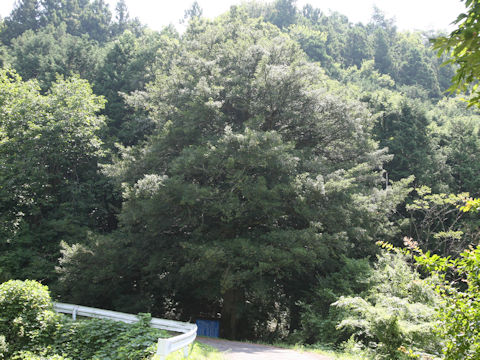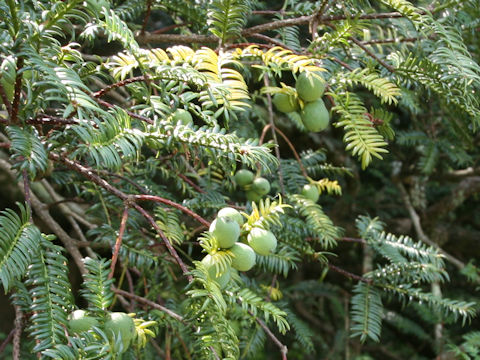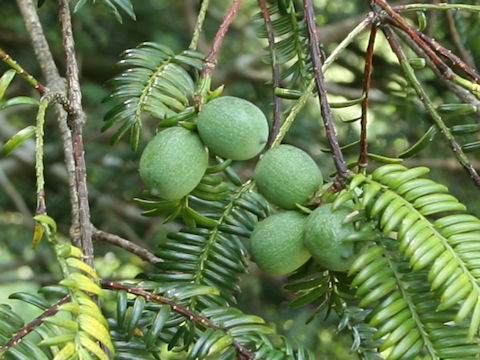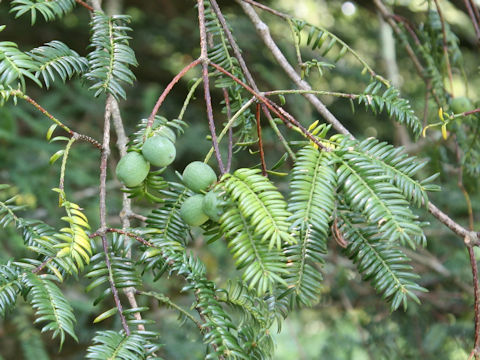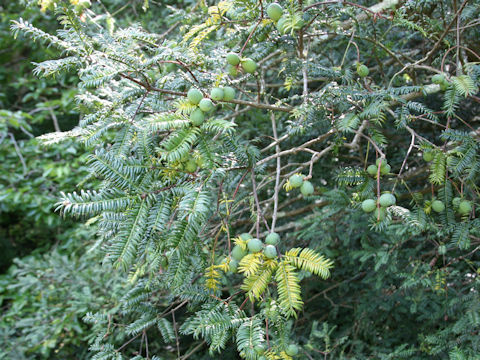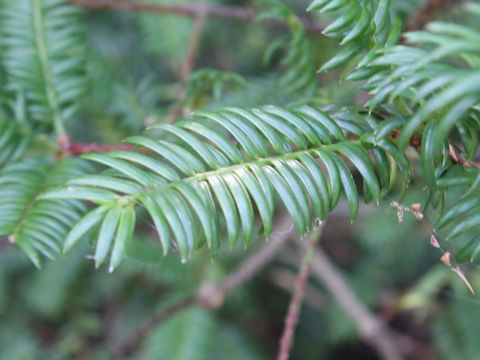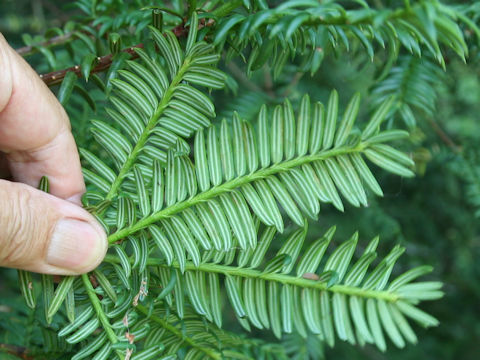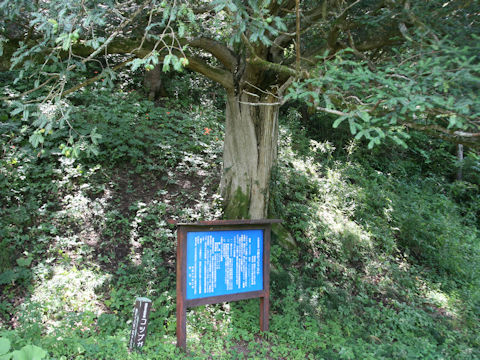
|
The "Kotsubu-gaya" (Torreya nucifera f. igaensis) belongs to Taxaceae (the Yew family). It is a tall evergreen tree that is a form of Japanese torreya (Torreya nucifera), distributed from south of Miyagi prefecture of Honshu to Shikoku and Kyushu. There are several forms of Japanese torreya with seeds that differ in shape from those of the common Japanese torreya, including the "hidamaki", "shibunashi", "bare", and "marumi-shaped" forms. The seeds of the mother species are 18-28 mm long, while the seeds of the "Kotsubu-gaya" are 10-20 mm long, spherical or short elliptic, and not pointed at the tip like the seeds of the mother species. The leaves are also smaller than those of the mother species, 10 to 18 mm long and 2 to 3 mm wide, with sharply pointed tips. The "Kotsubu-gaya" was discovered in Nagase, Nabari City, Mie Prefecture, in 1928 by Professor Kinichi Morikawa of Kyushu University, but this individual tree was toppled by a storm in 1959. The second "Kotsubu-gaya" discovered in Japan was the "Kotsubu-gaya of Obara" in Obara, Shiroishi City, Miyagi Prefecture, discovered by botanical researcher Shiroji Saito (1872-1946), and designated as a natural monument in 1943. "Kotobu-gaya of Kozouji Temple" in Kohchi-cho, Toba City, Mie Prefecture, was designated as a national natural monument in 1993. In addition, "Kotsubu-gaya of Hokyuji Temple" in Shinohara, Kai City, Yamanashi Prefecture, and "Kotsubu-gaya of Uwato Shrine" in Ichikawa Misato Town, Yamanashi Prefecture, have also been identified.
|
